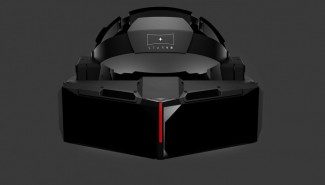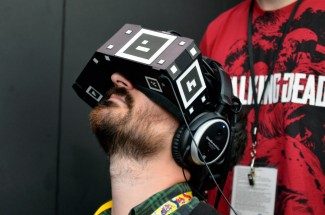Starbreeze, the company behind the 210 degree FOV VR headset StarVR are to work with large-scale cinema specialists IMAX to create “premium location-based VR” experiences “worthy of the IMAX brand”.
It seems IMAX, the brand known for their huge, immersive cinema experiences and high resolution cameras, are doubling down on virtual reality. We heard yesterday that the firm is to become part of Google’s 360 video platform Jump, announcing it’s to supply cameras as part of a high resolution, VR film rig.

Today, Starbreeze have announced that they are to partner with IMAX on a new initiative that aims to bring “premium” VR film experiences to public locations, all powered by Starbreeze’s high-FOV virtual reality headset headset StarVR. According to a press release, under the agreement, IMAX will create a “premium VR experience” that will leverage Starbreeze’s headset technology, StarVR, which provides a 210-degree full peripheral field of view, with the resulting experience being “worthy of the IMAX brand.”

“As technology and entertainment options evolve, we continue to innovate and find new platforms to extend The IMAX Experience,” said IMAX Corp. CEO Richard L. Gelfond. “We believe VR is an area that holds tremendous promise and is a natural progression for IMAX given our established worldwide brand presence, our immersive entertainment technology know-how, and strong industry relationships with filmmakers, studios and exhibitors. Just as IMAX provides the best cinematic experience, Starbreeze is a pioneer in the burgeoning VR market and its headsets will deliver a wider, “IMAX-like” field of view to allow consumers to see, feel, move and play in new worlds in a powerfully immersive and realistic way. While our partnership with Google puts IMAX in the VR capture business, Starbreeze brings the capabilities in content distribution and delivery that, when combined, help us to establish a complete offering across the VR ecosystem.”
It looks as if the plan is to have StarVR headsets installed at locations with high public footfall, so Malls, Cinema Multiplexes etc. What’s not clear from the release is whether this will be focused as a way to market and promote IMAX and Starbreeze content or that consumers will be charged for the privilege. What we do know is that the initiative will feature both interactive VR gaming content, provided by Starbreeze and 360 VR cinematic content filmed using the aforementioned, recently announce IMAX Google VR camera.
Starbreeze also announced recently its intention to partner with electronics firm Acer to manufacture the StarVR headset itself. Up to now we’ve only seen StarVR, an evolution of the InfinitEye project, in prototype form – perhaps with Acer on board and with this new content announcement out there, it’s an indication the StarVR team are closing in on a final design. We’re certainly looking forward to once again experiencing that 210 degree FOV, and will keep you posted once we learn more.







